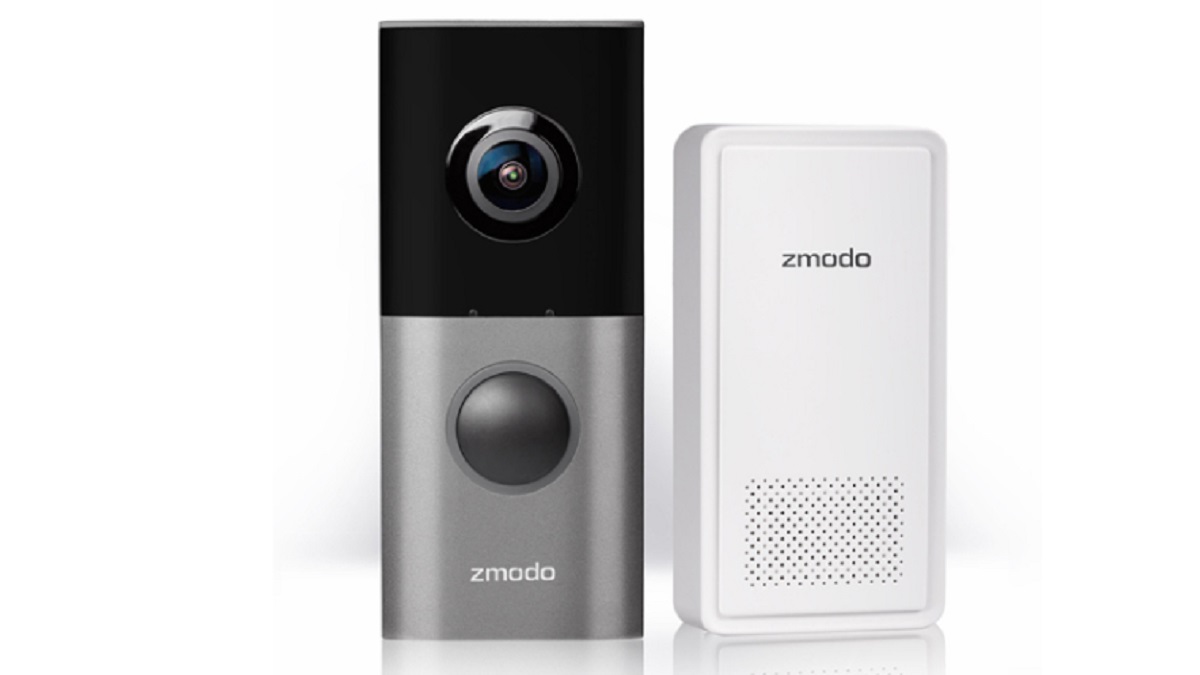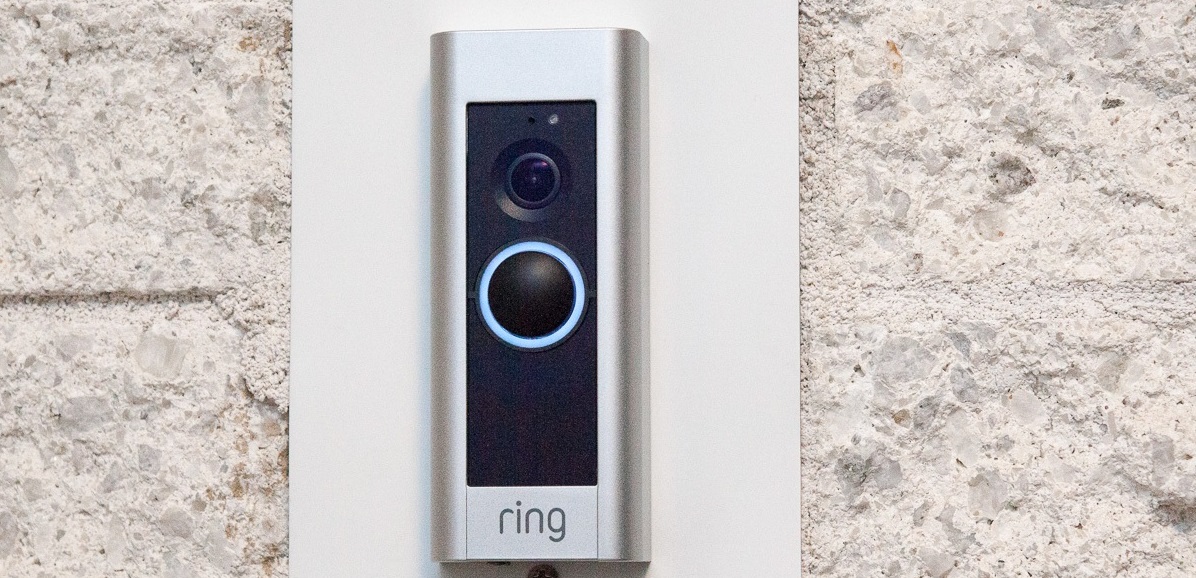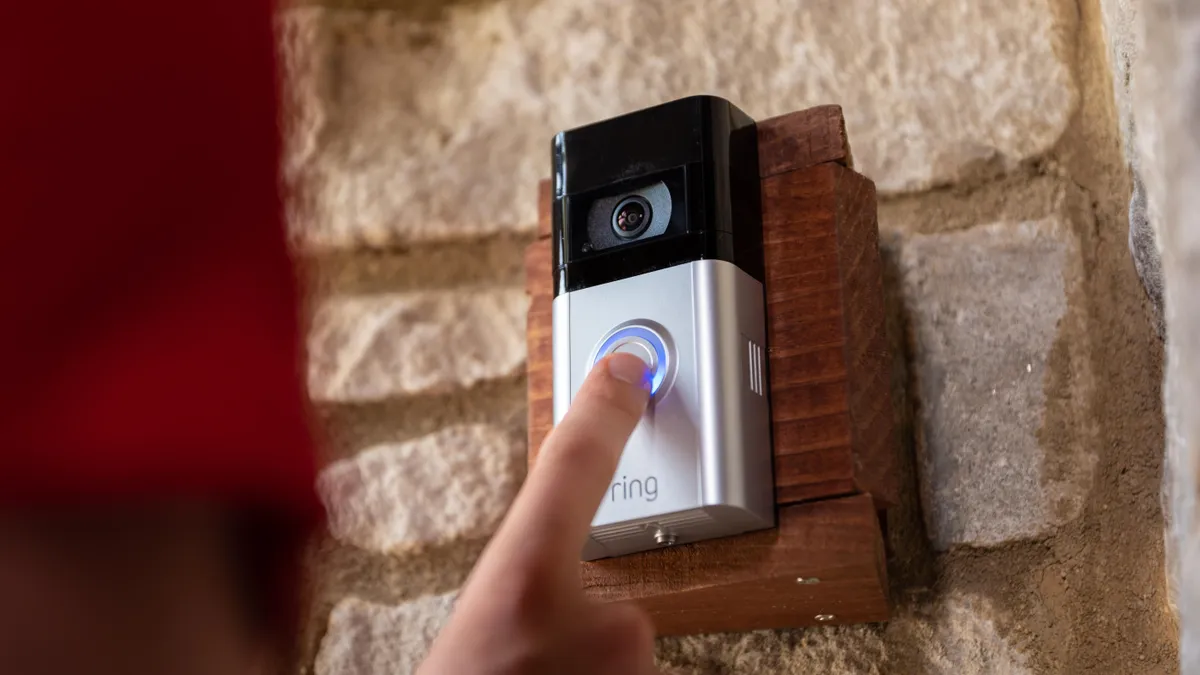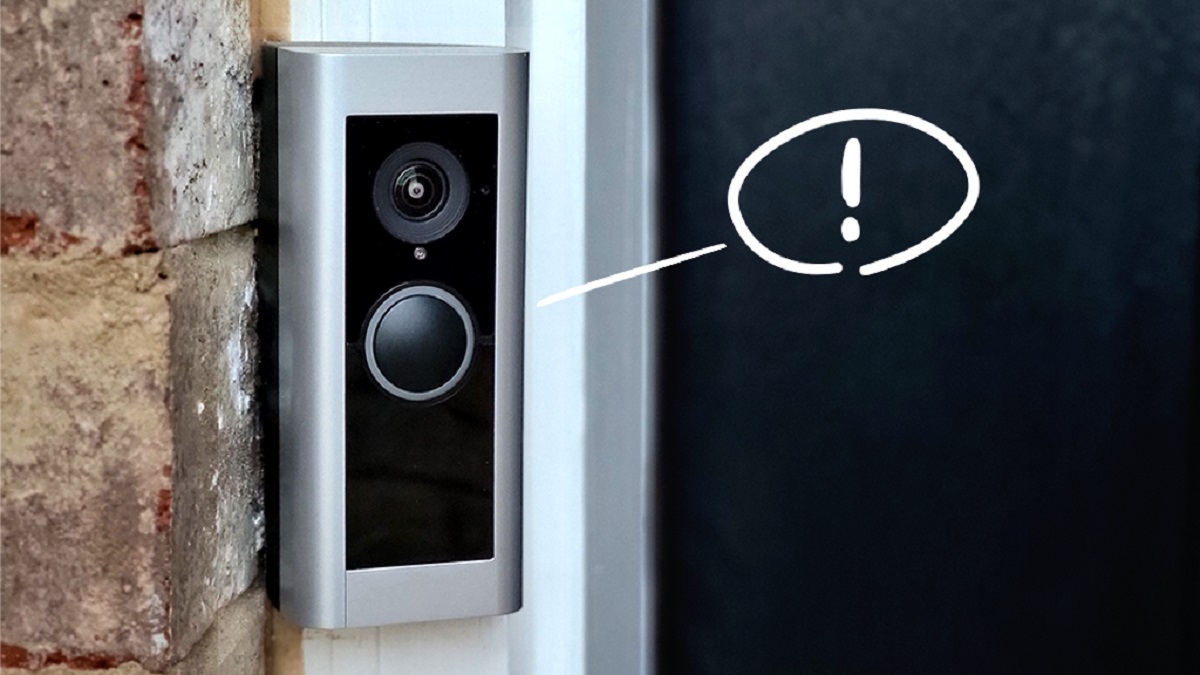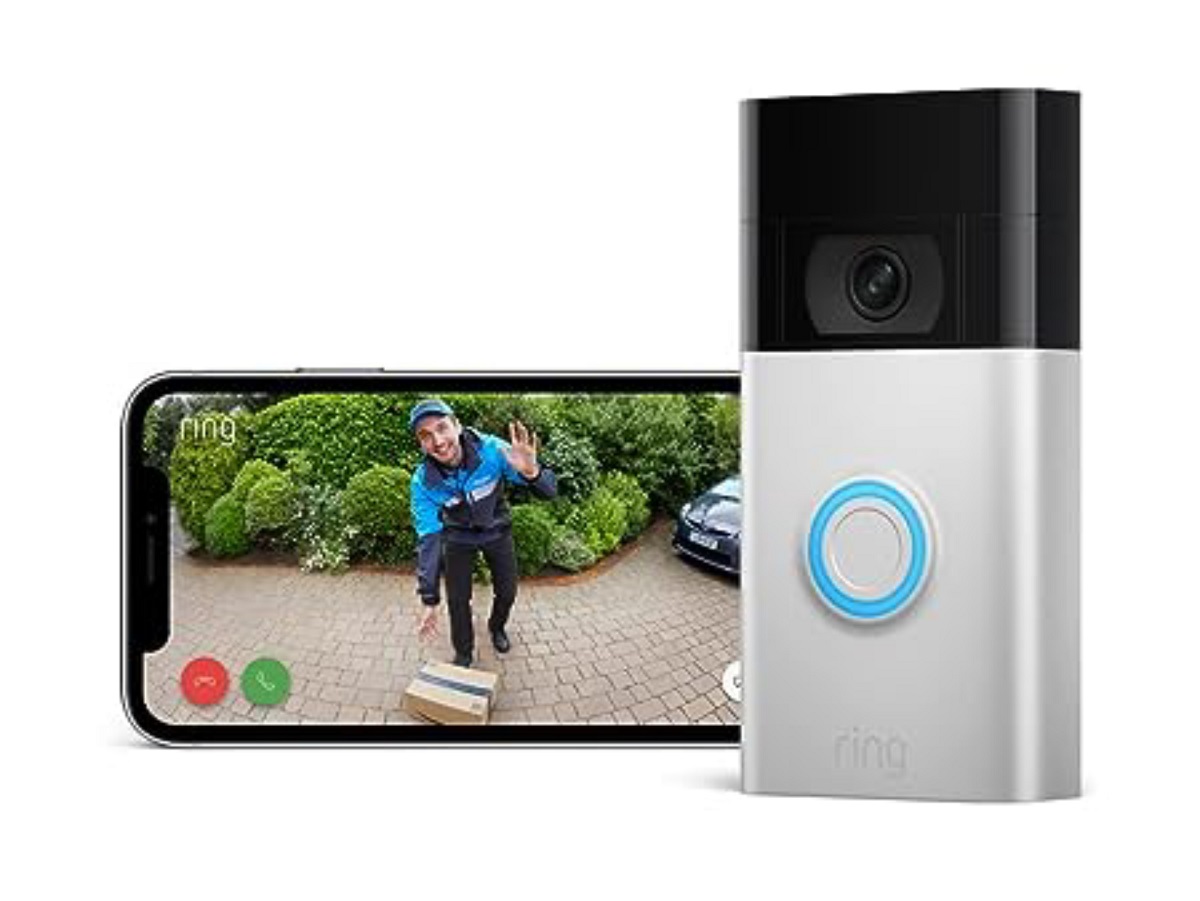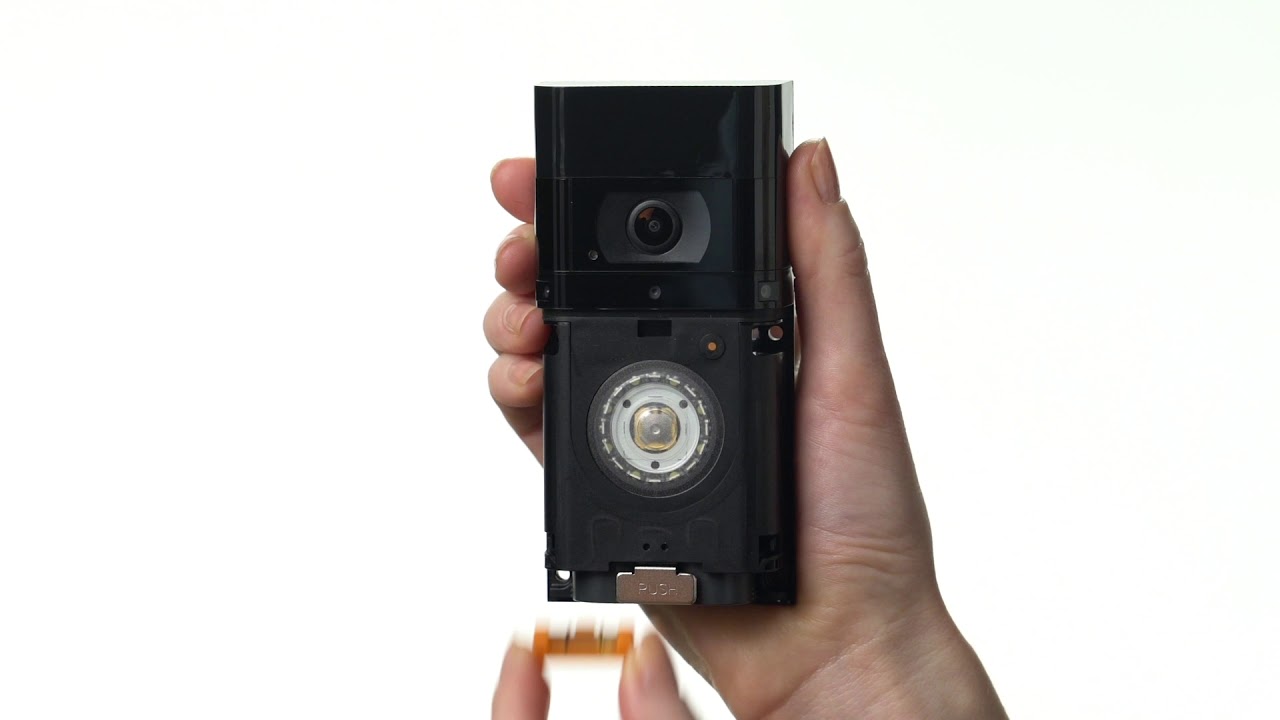Power Source
Your Ring Video Doorbell is powered by either a built-in rechargeable battery or by being hardwired to an existing doorbell’s electrical system. This dual power source provides flexibility and ensures that your device remains operational even during power outages.
If you choose to rely on the built-in battery, you can charge it by simply removing the doorbell from its mounting bracket and connecting it to a standard micro USB cable. This ensures that your device always has a reliable power source and can be easily recharged when needed.
On the other hand, if you opt for the hardwired installation, your Ring Video Doorbell will be connected to your home’s electrical system. This means that it will have a constant power supply and won’t require regular charging. It also gives you the option to utilize your existing doorbell wiring, providing a seamless integration with your home’s electrical setup.
Moreover, the Ring Video Doorbell comes with a special mechanism that allows it to switch between the battery and the wired power source seamlessly. This ensures that even if there is a temporary power interruption, your device will continue functioning without any disruption.
Having a reliable power source for your Ring Video Doorbell is essential for keeping it functional and preventing potential theft. It ensures that your device is always powered up and able to perform its key functions, such as capturing video footage and sending alerts to your smartphone.
In summary, the power source options offered by Ring Video Doorbell, including the built-in rechargeable battery and the hardwired connection, provide you with added convenience and security. By having a reliable power source, you can ensure that your device remains operational and ready to protect your home at all times.
Physical Installation
The physical installation of your Ring Video Doorbell plays a crucial role in preventing potential theft. Proper installation ensures that the device is securely mounted and not easily removable by unauthorized individuals. Here are some key aspects of the physical installation process:
1. Mounting: The Ring Video Doorbell should be installed in a location that provides a clear view of the area you want to monitor. It should be mounted securely, using the provided screws and mounting bracket. Ensure that the doorbell is positioned at the right height and angle to capture the desired field of view.
2. Wiring (if applicable): If you choose the hardwired installation option, ensure that the doorbell wiring is properly connected to your home’s electrical system. Follow the manufacturer’s instructions or consult a professional electrician to ensure a safe and correct installation.
3. Weatherproofing: Use the provided weather-resistant cover to protect your Ring Video Doorbell from rain, snow, and extreme temperature variations. This helps to prolong the lifespan of the device and ensures its optimal performance in different weather conditions.
4. Additional Security Measures: Consider using security screws or tamper-proof covers to prevent unauthorized removal of the doorbell. These additional measures can act as deterrents against theft and tampering.
5. Regular Maintenance: Periodically check the mounting screws and ensure that they are tightened securely. Keep the device clean from dust and debris, as this can affect its performance and video quality.
By following these installation guidelines, you can significantly reduce the risk of someone stealing your Ring Video Doorbell. A properly installed device is not only more resistant to theft but also allows for optimal performance and reliable home security.
Network Encryption
Network encryption is a critical aspect of protecting your Ring Video Doorbell from potential theft and unauthorized access. It ensures that the data transmitted between your device and the Ring servers is securely encrypted, making it extremely difficult for hackers to intercept or manipulate the communication. Here’s how network encryption safeguards your doorbell:
1. Secure Wi-Fi Connection: Your Ring Video Doorbell relies on a Wi-Fi connection to transmit data. It is essential to set up a strong and secure Wi-Fi network in your home to prevent unauthorized access. Use a complex and unique password for your Wi-Fi network and consider enabling WPA2 encryption for maximum security.
2. Encryption Protocols: Ring employs industry-standard encryption protocols, such as SSL/TLS, to secure the communication between your device, the Ring app, and the Ring servers. These protocols ensure that the data transmitted is encrypted, rendering it unreadable to any unauthorized parties.
3. Two-Factor Authentication: Ring offers an additional layer of security through two-factor authentication. This feature requires you to verify your identity using a secondary method, such as a unique code sent to your smartphone, before granting access to your account. Enabling two-factor authentication adds an extra barrier against potential unauthorized access to your Ring Video Doorbell.
4. Firmware Updates: Ring regularly releases firmware updates for their devices, including the Ring Video Doorbell, to address security vulnerabilities and improve overall system security. It is crucial to keep your device’s firmware updated to ensure that you have the latest security patches and enhancements.
By implementing strong network encryption measures, you can significantly reduce the risk of someone stealing your Ring Video Doorbell or gaining unauthorized access to your home security system. Remember to regularly review your network security settings and update your device’s firmware for continued protection.
Password Protection
Ensuring strong password protection is crucial for preventing unauthorized access to your Ring Video Doorbell and protecting it from potential theft. A weak or easily guessable password can compromise the security of your device and leave it vulnerable. Here are some essential tips for effective password protection:
1. Use a Unique and Complex Password: Create a password that is unique to your Ring Video Doorbell and avoid using common, easily guessable passwords such as “password” or “123456”. Your password should be a combination of upper and lowercase letters, numbers, and special characters.
2. Avoid Personal Information: Do not use personal information such as your name, address, or birthdate as part of your password. This information can be easily guessed or obtained by someone trying to gain unauthorized access.
3. Regularly Update Your Password: It is crucial to change your password periodically. Doing so ensures that even if your password is compromised, the time window for unauthorized access is limited. Set a reminder to update your password every few months for added security.
4. Two-Factor Authentication: Enable two-factor authentication for an extra layer of protection. This additional security feature requires you to provide a second form of verification, such as a unique code sent to your smartphone, in addition to your password when logging into your Ring account.
5. Secure Password Storage: Avoid writing down your password or storing it in an easily accessible location. Instead, use a reputable password manager application to securely store and manage your passwords.
6. Update Default Passwords: If you have multiple devices connected to your Ring Video Doorbell system, ensure that each device has its own unique password. Avoid using default passwords that come with the devices, as these are often well-known and can be easily exploited by attackers.
By following these password protection best practices, you can significantly reduce the risk of someone stealing your Ring Video Doorbell or gaining unauthorized access to your home security system. Remember, a strong and unique password is a critical first line of defense in protecting your device and ensuring the security of your data.
Two-Factor Authentication
Two-factor authentication (2FA) is a powerful security feature offered by Ring that adds an extra layer of protection to your Ring Video Doorbell. It requires users to provide two forms of verification when logging into their Ring account, making it significantly more challenging for unauthorized individuals to gain access. Here’s why two-factor authentication is crucial for preventing theft and securing your device:
1. Enhanced Account Security: With two-factor authentication enabled, simply providing your username and password is not enough to access your Ring account. A second verification step, such as a unique code sent to your mobile device, is required. This ensures that even if your password is compromised, unauthorized access is still prevented.
2. Protection against Password Guessing: Two-factor authentication significantly minimizes the risk of hackers gaining access through password guessing or brute-forcing techniques. Even if they manage to obtain someone’s password, they would still need the unique verification code to log in to the account.
3. Increased Security for Mobile Devices: Many users access their Ring account through their mobile devices. By enabling two-factor authentication, you add an extra layer of security to prevent unauthorized access to your Ring Video Doorbell through a lost or stolen device.
4. Additional Layer of Identity Verification: With two-factor authentication, the second verification step acts as proof of identity. This helps ensure that only authorized individuals can access and control your Ring devices, protecting your privacy and preventing unauthorized use.
5. Quick and Easy Setup: Enabling two-factor authentication on your Ring account is a straightforward and user-friendly process. It typically involves verifying your phone number or email address and choosing your preferred method of verification, such as receiving a code via SMS or using an authenticator app.
By taking advantage of two-factor authentication, you significantly reduce the risk of someone stealing your Ring Video Doorbell or gaining unauthorized access to your home security system. It adds an extra layer of security by requiring a second form of verification, ensuring that only trusted individuals can access your Ring account and control your devices.
Motion Detection
Motion detection is a key feature of the Ring Video Doorbell that helps prevent theft and enhances the overall security of your home. By actively monitoring and alerting you to any detected motion, this technology acts as an effective deterrent against potential intruders. Here’s how motion detection contributes to the protection of your Ring Video Doorbell:
1. Notification of Activity: When enabled, the motion detection feature constantly monitors the area surrounding your Ring Video Doorbell. As soon as any motion is detected, you will receive an instant notification on your connected smartphone or device, allowing you to quickly assess the situation.
2. Capturing Suspicious Activity: Motion detection ensures that any suspicious or unexpected activity is captured and recorded. This allows you to review the footage later and potentially provide valuable evidence to law enforcement if needed. The ability to see and review any visitors or unauthorized individuals near your doorstep adds an additional layer of security and peace of mind.
3. Customizable Motion Zones: Ring Video Doorbell offers the flexibility of customizing motion detection zones to prioritize specific areas of interest. You can adjust the sensitivity and range of detection to avoid capturing unnecessary or false alerts, such as passing cars or moving tree branches.
4. Smart Alerts and Deterrence: The Ring Video Doorbell is equipped with smart alerts that can differentiate between people, animals, and other moving objects. This helps to minimize false alarms and ensures that you are promptly alerted to potential threats. Additionally, the visible presence of a doorbell camera can act as a strong deterrent, as potential intruders are less likely to approach a home with visible surveillance.
5. Integration with Other Devices and Services: The motion detection feature of the Ring Video Doorbell can be integrated with other smart home devices and security systems. This allows you to create a comprehensive home security network, triggering actions like turning on lights or sounding an alarm when motion is detected.
Motion detection is an indispensable tool in preventing theft and enhancing the overall security of your Ring Video Doorbell. By promptly alerting you to any detected motion and allowing you to view and record suspicious activity, motion detection helps deter potential intruders and provide valuable evidence if an incident occurs.
Tamper Detection
Tamper detection is a crucial security feature of the Ring Video Doorbell that helps prevent theft and protects the integrity of the device. It is designed to notify you if someone attempts to tamper with or remove the doorbell, ensuring that any unauthorized access or interference is promptly detected. Here’s how tamper detection strengthens the security of your Ring Video Doorbell:
1. Mounting Bracket Security: The Ring Video Doorbell is securely attached to a mounting bracket that holds it in place. Tamper detection includes features that detect if the doorbell is forcibly removed from the bracket or if the mounting screws are tampered with, triggering an immediate alert to you.
2. Vandal-Resistant Design: Ring Video Doorbells are designed with durability and security in mind. The mounting bracket is built to withstand tampering attempts and remains securely fixed to the designated location.
3. Tamper Alerts: If someone tries to interfere with your Ring Video Doorbell, such as attempting to remove it or tampering with the wiring, you will receive an instant alert on your connected device. This allows you to take the necessary steps to secure your doorbell and address any potential security breach.
4. Enhanced Home Security: Tamper detection ensures that your Ring Video Doorbell remains operational and in place, providing continuous surveillance and protection for your home. The ability to detect any tampering attempts adds an additional layer of security to the already robust security features offered by the doorbell.
5. Deterrent Effect: The mere presence of a tamper-resistant doorbell can discourage potential thieves or vandals. The knowledge that any tampering attempt will trigger an alert raises the stakes for any potential wrongdoers, significantly reducing the likelihood of theft or interference.
By incorporating tamper detection into the design of the Ring Video Doorbell, Ring prioritizes the security and integrity of the device. This feature ensures that any attempts to tamper with or remove the doorbell are instantly detected, allowing you to take immediate action and ensuring the continuous protection of your home.
Cloud Storage and Data Encryption
Cloud storage and data encryption are essential components of the Ring Video Doorbell’s security infrastructure. These features provide secure storage for your video footage and protect your data from potential theft or unauthorized access. Here’s how cloud storage and data encryption contribute to the overall security of your Ring Video Doorbell:
1. Secure Video Storage: Ring Video Doorbell offers cloud storage for your recorded video footage. This means that your videos are stored remotely in secure servers rather than on the device itself. Storing your footage in the cloud prevents potential thieves from stealing or tampering with the recorded evidence.
2. End-to-End Encryption: Ring employs strong end-to-end encryption to ensure the privacy and security of your video data. This means that your footage is encrypted during transmission and can only be decrypted by authorized devices, providing an extra layer of protection against unauthorized access.
3. Data Integrity and Redundancy: Ring’s cloud storage system ensures data integrity through redundancy. Your video footage is stored across multiple servers, protecting it from loss in the event of hardware failures or other unforeseen circumstances. Redundancy also allows for increased reliability and availability of your video data.
4. Secure Access Controls: Ring implements strict access controls to protect your stored video footage. Only authorized users with valid login credentials can access the cloud storage system, ensuring that your data remains confidential and inaccessible to unauthorized individuals.
5. Encrypted Communication: Ring’s systems use secure communication protocols, such as SSL/TLS, to encrypt data transmission between your Ring devices, the Ring app, and the cloud servers. This ensures that your video data is protected against interception or eavesdropping by unauthorized parties.
6. Secure Mobile Access: The Ring app, which allows you to access your video footage and control your Ring Video Doorbell remotely, incorporates industry-standard security measures. These include secure authentication and encrypted communication, ensuring that your mobile access to the Ring system is secure and protected.
By utilizing cloud storage and implementing strong data encryption, Ring Video Doorbell ensures the privacy, security, and integrity of your recorded video footage. These features protect your data from potential theft or unauthorized access, allowing you to have peace of mind knowing that your video recordings are stored securely.
Privacy Settings
Ring Video Doorbell provides robust privacy settings that give you control over how your device captures, shares, and stores data. These settings are designed to protect your privacy and ensure that you have complete control over your recorded video footage and personal information. Here’s how privacy settings enhance the privacy and security of your Ring Video Doorbell:
1. Video Recording Control: With Ring’s privacy settings, you have the ability to control when your Ring Video Doorbell records video footage. You can customize the settings to only record when motion is detected or when the doorbell button is pressed. This ensures that recording is limited to relevant events, reducing the amount of unnecessary footage captured.
2. Audio and Video Access: Ring offers the option to enable or disable audio recording during video capture. This empowers you to control whether or not audio is recorded along with the video footage, depending on your privacy preferences.
3. Guest Access: You have the flexibility to grant selective access to your Ring Video Doorbell’s live feed or recorded footage to specific individuals through the Ring app. You can invite trusted guests or family members, giving them access to certain features while maintaining control over who can view your doorbell’s data.
4. Sharing Controls: Ring provides you with granular control over sharing options. You can choose to share video clips or recorded events with others or restrict sharing to private, authorized users. This ensures that your video footage is only accessible to individuals you trust.
5. Third-Party Integration: Ring allows you to control the integration of your Ring Video Doorbell with other smart home devices or services. You have the freedom to choose which devices or platforms are connected to your Ring system, ensuring that you maintain complete control over your data and prevent unauthorized access.
6. Data Retention: Ring provides options to control the retention period for your recorded video footage. You can choose to retain videos for a certain duration or set up automatic deletion after a specific time. This allows you to manage your storage and ensures that your data is not retained longer than necessary.
By taking advantage of the privacy settings offered by Ring, you can customize the level of privacy and security that aligns with your preferences. These settings enable you to have control over the data captured, accessed, and shared by your Ring Video Doorbell, giving you peace of mind and a heightened sense of privacy.
External Factors (e.g., Neighborhood Security)
In addition to the built-in security features of the Ring Video Doorbell, external factors such as neighborhood security can also play a significant role in preventing theft and enhancing the overall security of your device. While the Ring Video Doorbell provides a vital layer of protection, considering these external factors can further bolster the security of your home. Here are some key considerations:
1. Neighborhood Watch Programs: Participating in or establishing a neighborhood watch program can significantly enhance the overall security of your community. This proactive approach encourages neighbors to keep an eye out for suspicious activities and promptly report any incidents, increasing the collective vigilance and deterring potential theft.
2. Home Security Systems: The presence of visible home security systems, such as surveillance cameras and alarm systems, can act as a deterrent to potential thieves. A network of security devices within your neighborhood can create a sense of enhanced security and discourage criminal activities.
3. Well-Lit Surroundings: Adequate lighting in and around your property can discourage potential thieves and help deter theft. Well-lit areas make it difficult for individuals to go unnoticed and increase the visibility of any suspicious activities in the vicinity of your Ring Video Doorbell.
4. Trusted Neighborhood Contacts: Establishing relationships with trusted neighbors who can keep an eye on your property when you’re away can be invaluable. They can report any unusual activities and help maintain a secure and peaceful environment, offering an additional layer of protection for your home.
5. Police Engagement: Familiarize yourself with your local police department’s resources and initiatives, such as community policing programs or crime prevention initiatives. These collaborations can provide valuable insights and resources to enhance the security of your neighborhood.
6. Communication and Collaboration: Foster open lines of communication and collaboration with your neighbors regarding security concerns. Sharing information about suspicious activities or incidents can help create a safer environment for everyone in the neighborhood.
Remember, while the Ring Video Doorbell offers advanced security features, external factors also play a vital role in maintaining a secure environment. By fostering a strong sense of community and taking active steps to enhance neighborhood security, you create a more robust defense against potential theft and ensure a safer environment for all residents.










